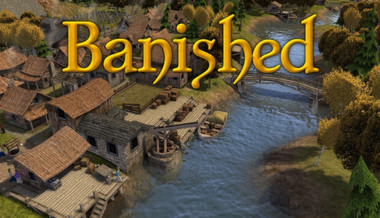

Workers & Resources: Soviet Republic - World Maps - Europe & USA & Canada
- Standard Edition
About
Add extensions
Visuals
Game features
Description
Spread the spirit of socialism around the world as you build Soviet superpowers in the locations of Pittsburgh, Prague, Paris, Pyongyang, and more. Ten scale maps alongside a few iconic new buildings representing various nations and regions will allow you to develop glorious republics across unique geographical challenges and opportunities.

Build and plan around scaled-down versions of existing real-world cities, towns, and villages on unpopulated maps, take on the challenge of a pre-existing population to support right from the start, or build on entirely empty maps to establish your glorious nation from the ground up:
Austria: The rugged terrain of Austria provides rich pockets of essential resources from iron to coal to uranium while also presenting the challenge of building a nation around craggy cliffs and steep mountains – the western reaches will prove particularly challenging to navigate, though the north presents plenty of room to grow. Trade with the Soviet bloc comes easily, as there are plenty of customs houses to connect with them along the flatter northern and eastern parts of the country, but if you intend to work with the NATO nations, you’ll soon find yourself needing to carve through the western mountains. As a landlocked nation, airports will provide the only other avenue for trade with both blocs.
British Isles: While Dover provides a connection to both blocs through customs houses and a power line, the British Isles will rely heavily on trade by sea and by air – especially far from the south-east coast of England. Foreign trade aside, moving goods within your nation will provide a unique challenge too – though an Irish Sea Bridge is one way to connect the two islands, and perhaps even the Isle of Man, you’ll rely on ferries and cargo planes to maintain a reasonable flow of important goods. Ireland, for example, holds one of two uranium pockets alongside the Outer Hebrides, while iron is nowhere to be found outside of England and Scotland. How will you build your United Soviet Kingdom and Soviet Irish Republic?
Czech Republic: Though much of its borders are covered in rugged terrain, the Czech Republic has plenty of easily-reached customs houses to trade with both blocs as it begins to establish itself as a regional powerhouse. Coal, iron, and bauxite are only found around the outskirts of the nation, while oil and uranium have a more central distribution – the distance between these pockets can create a challenge for unprepared leaders, especially when planning winding routes to and from the rich mountains around the central hills, plains, and Vltava river.
East Germany: Vast forested plains provide ample opportunities for a variety of industries and urban development alike, but while low quality coal is available in small pockets across these relatively comfortable areas, iron and uranium can only be found in the rugged mountains to the south, with pockets of oil isolated in the far east and north east. To the west lie opportunities with NATO customs houses, while to the east are old Soviet bloc trade opportunities, and to the north, the Baltic Sea and potential for a grand port. Will you tear down the Berlin Wall and build a glorious Soviet republic, or will you ally solely with the west as you establish a powerful nation at the heart of Europe?
Estonia: Tucked away with only Russia and Latvia as its neighbors by land, Estonia has several customs houses to trade with the Soviet bloc, though if it wishes to trade with the West, it must rely on sea and air ports. A few pre-existing cargo and passenger harbors provide connectivity between the islands and the mainland from the start. Meanwhile, Tallinn boasts a passenger train station with tracks that connect to Soviet customs houses to the south and east as well as warehouses located alongside cargo harbors – with a solid five year plan, these lines can quickly become the lifeblood of goods transportation across the nation for import, export, and local use.
France: From the English Channel to the Mediterranean, and from the Atlantic coast to her eastern borders, lead the nation of France to glory as you distribute resources across vast distances to establish core industries – iron-rich pockets to the south and north-east, bauxite in small quantities across the north and south-west, with pockets of coal and oil littered around the nation. Will you build up the ports of Le Havre and Marseille to establish massive trade centers? Will the Pyrenees and French Alps feature hubs of tourism? Which trade partners will you rely on as you build a powerful Soviet French Republic?
North Korea: The Soviet People’s Republic of Korea awaits a glorious leader – to the south lies an opportunity to trade with the West, while to the north you will find Soviet customs houses instead. The rugged terrain on the west coast is rich in iron, uranium, bauxite, and coal, but it is hard to navigate by land – sea and air routes might prove useful in spreading the resource wealth of the nation, particularly from the isolated north-west. Plains on the western coast provide ample land for agriculture and urban development, and though infrastructure largely consists of dirt roads outside of Pyongyang, a stalwart leader can pave the way to an illustrious future.
Poland: Featuring vast flatlands, interconnected riverways, and a comprehensive railway network left in a state of disrepair by war, Poland provides a unique challenge in a variety of ways. Apart from oil deposits to the north west, the vast majority of Poland’s resource wealth is located to the south and west, and building the nation into an industrial powerhouse will take careful planning to bring these resources together in an efficient manner across this vast landscape.
USA - East Coast: A vast land of opportunity awaits, stretching from New York State to North Carolina, butting up against the rugged Appalachian Mountains. Bring the glory of a command economy and good public transit to the United States of America as you grow urban centers along the coast, bringing resources in from the mountains to the west. Though there are plenty of customs houses with which to trade with both blocs, becoming a self-sufficient nation will prove challenging – essential resources such as coal and iron are only available in pockets among the mountains, far from the plains where your cities and large industrial buildings are most easily established, and though bauxite and oil will be more easily accessed, uranium ore will once again require heavy investment as you develop on and around rugged terrain. Opportunities exist for massive ports and impressive cities that stretch as far as the eye can see, but establishing a self-reliant Soviet republic in the New World will prove a challenging endeavor.
Yugoslavia: The vast majority of Yugoslavia is dotted with mountains and hills, leaving limited plains on which to develop large urban sprawls without investing heavily in terraforming projects. With rugged terrain and winding roads connecting distant cities, logistical challenges will humble even the most visionary of leaders, asking you to develop cities in mountain passes more often than not. The rough coastlines make way for the occasional harbor (whether you wish to build a tourist center and cruise port around Zadar, or a commercial hub around Split), and the plains to the north provide some relief and room to establish industrial and economic hubs.
Challenge yourself and take on the unique geographical limitations of each map as you build powerful Soviet republics around the world.













